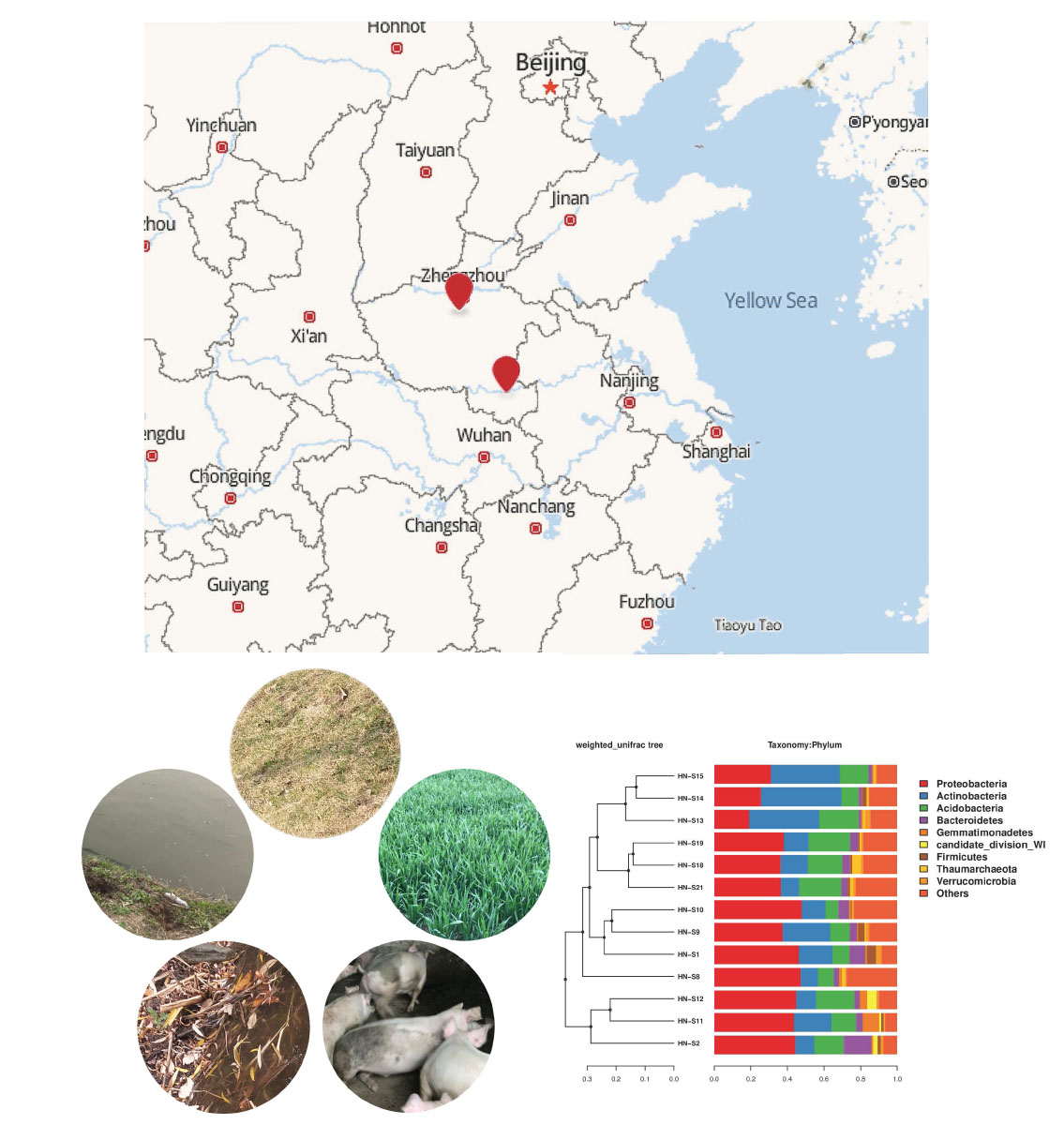Soils harbor diverse bacteria, and these bacteria play important roles in soil nutrition cycling and carbon storage. Numerous investigations of soil microbiota had been performed, and the core microbiota in different soil or vegetation soil types had been described. However, the complexity of soil environments and relatively limited information of many geographic areas had attracted great attention on comprehensive exploration of soil microbes in enormous types of soil. To reveal the core soil microbiota in Huabei plain, soil samples from metropolis and countryside regions in the Huabei plain were investigated using high-throughput sequencing strategy. The results showed that the most dominant bacteria are Proteobacteria (38.34%), Actinobacteria (20.56%), and Acidobacteria (15.18%). At the genus-level, the most abundant known genera are Gaiella (3.66%), Sphingomonas (3.6%), Acidobacteria Gp6 (2.1%), and Arthrobacter (2%). Moreover, several dominant operational taxanomy units (OTU), such as OTU_3 and OTU_17, were identified to be associated with the soil environment. Microbial distributions of the metropolis samples were different from the countryside samples, which may reflect the environments in the countryside were more diverse than in the metropolis. Microbial diversity and evenness were higher in the metropolis than in the countryside, which might due to the fact that human activity increased the microbial diversity in the metropolis. The soil core microbiota of the Huabei plain were complex, and microbial distributions in the Huabei plain might be mainly affected by the human activity and environmental factors, not by the distance. Our data highlights the soil core microbiota in Huabei Plain, and provides insights for future soil microbiota distribution studies in central China.

